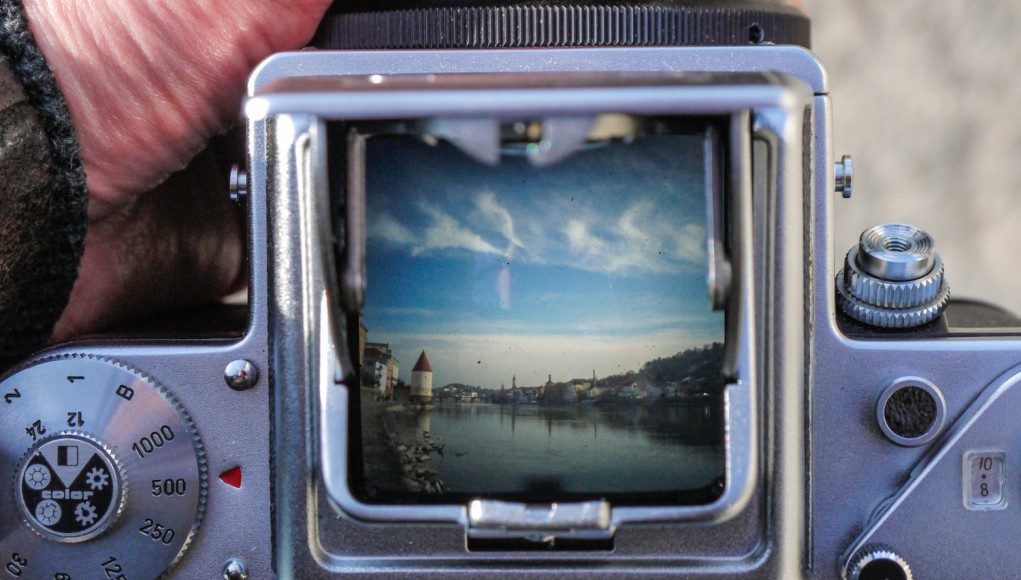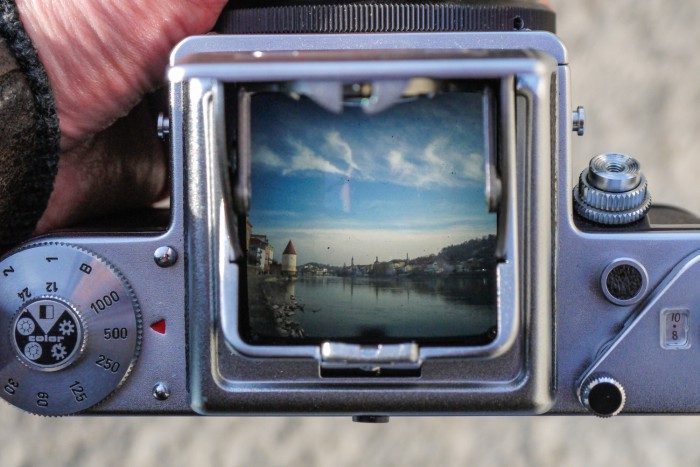
As more cinematic VR content emerges from early pioneers, traditional filmmakers are starting to catch on to the massive potential that virtual reality holds for immersive storytelling. However, the ‘flat screen’ is a very mature medium, one which has conventions that have been honed over more than a century. Filming cinematic VR content, on the other hand, requires filmmakers to play by a new rulebook.
Helping traditional filmmakers bust out of the frame and into cinematic VR filmmaking is the topic of a live webinar tomorrow (Thursday, December 11th) featuring Greg Downing, CTO of the Santa Monica based visual effects studio, xRez. To learn more about the perspective of the traditional filmmaker, and how that perspective intersects with the emerging medium of cinematic VR, I asked Jeremiah Karpowicz of ProVideo Coalition to fill us in.
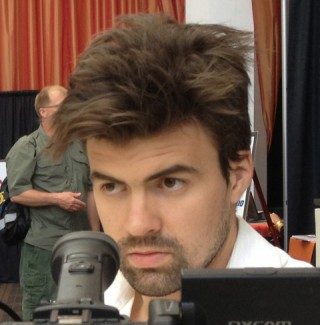 Jeremiah Karpowicz moved to Los Angeles to become a screenwriter but quickly realized making a film was about much more than the script. He worked at a post house where films like Watchmen (2009), Gamer (2009), and Green Lantern (2011) came through the door, but settled in as the Executive Editor of ProVideo Coalition, a publication which pulls together content from working professionals across media & entertainment. He’s shot, edited, and posted video content from various trade shows for PVC and writes for the site regularly.
Jeremiah Karpowicz moved to Los Angeles to become a screenwriter but quickly realized making a film was about much more than the script. He worked at a post house where films like Watchmen (2009), Gamer (2009), and Green Lantern (2011) came through the door, but settled in as the Executive Editor of ProVideo Coalition, a publication which pulls together content from working professionals across media & entertainment. He’s shot, edited, and posted video content from various trade shows for PVC and writes for the site regularly.
I still think of Tron when I hear people talk about VR. And not even Tron: Legacy (2010). The original Tron (1982)—with the goofy suits, gnarly bikes and an atmosphere that drips with everything ’80s—is where my mind goes every time I hear someone mention the term ‘VR’. If you don’t know what I’m talking about, one look at a still from that movie will give you all the info you need.
Starting when it came out in 1982 and for decades after, the movie’s dazzling depiction of a virtual world inside of a computer made a lasting impression on filmmakers, and that proved to be both a good and a bad thing. It showed filmmakers that the worlds they created and explored could literally spring out of their imagination and have little or nothing to do with reality itself. But it also created a distinct impression that what we saw in Tron is what virtual worlds could and should look like. In some ways that meant the movie was also a victim of its own success, because even as the technological capabilities around VR progressed, filmmakers’ perceptions around how they could incorporate such things into their films did not.
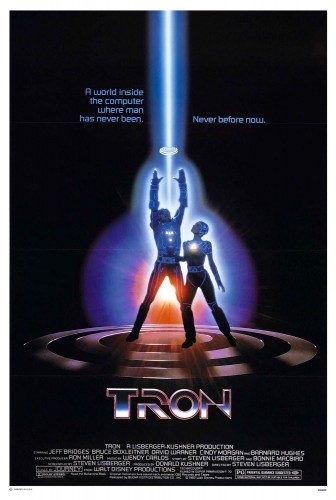
The look and feel of Tron stuck around for many filmmakers in a way that isn’t really fair to VR itself. Modern audiences, and even people who grew up with the film, will note how clunky so much of everything about the movie looks and feels, but that’s the equivalent of saying that a Commodore 64 looks and feels clunky when you’re trying to use it for anything other than a paperweight in 2014; what it is now isn’t as important as what it meant for the progression of the technology.
We’ve come a long way in so many different respects from those early days of VR that wasn’t really VR, but for many filmmakers, the visual language they think of in terms of VR is still antiquated. They already have a concept of what VR can ‘do’, but it’s based on a perception that’s either out of date or misinformed. Some are unwilling and others are unable to see the opportunities that are in front of them with this technology, but the specific reasons for not changing their concept around what VR is capable of doing are a moot point.
Greg Downing, CTO of Santa Monica based VR studio xRez, is a person who doesn’t hold onto such limited perceptions. He’s worked on major motion pictures such as The Day After Tomorrow (2004), Bicentennial Man (1999) and The Fifth Element (1997), where his passion for opening up new worlds for an audience is evident. As a partner at xRez, he’s the leader of a creative imaging and visual effects production house which explores and applies emerging techniques in computer graphics.
This year alone they’ve worked on the documentary Mysteries of the Unseen World, put together the immersive dome for the Pull of the Moon interactive video as well as various other projects. Downing has watched and even helped the growth of the technology, and it’s allowed him to become a pioneer in creating cinematic VR content for devices like the Oculus Rift. Thinking about the approach that needs to be taken with VR, especially as it pertains to film, is something he’s spent a lot of time thinking about.
“VR really needs to be thought of as a new media,” Downing said. “Every time we approach a new media it is informed by previous media we have worked with. Some of the ideas from film will not work in VR at all, some will have to be modified and some will remain with us. We can look back at these transitions from previous media and they have required varying degrees of adjustment, from a moderate adjustment between black and white film to color imaging, or a more substantial adjustment from radio to television. It is likely that it will take a period of experimentation to develop a very nuanced understanding of the differences between this new medium and film.”
The term “framed media,” is one Downing uses, and it’s a great way to describe the manner in which filmmakers think. Ultimately, that line of thinking doesn’t fit with how VR works, and it’s the reason so many filmmakers struggle with the concept. To a filmmaker, everything they envision is in terms of a frame they’re viewing; the boundary of the lens. They think about how things are going to look on the camera they’re shooting with and what their audience is going to see when they’re watching on-screen. Interaction or direct audience involvement in the story is a foreign concept to most, and they have difficulty getting their head around how interactive and immersive VR changes the way they can approach their stories. Many don’t realize that developments like the Oculus Rift allow them to create a different kind of story that’s far removed from that single frame perspective.
Filmmakers have always thought of their audiences from this perspective where their role is to function as a true audience that is along for the ride, or at most, a passive participant. As an audience member, you’re not on that rooftop with Spider-Man, you’re watching him up there. Alfred Hitchcock built tension by letting his audience know a bomb was under the seat, but they couldn’t deliver a warning to anyone on-screen. Found-footage films have characters talking to or addressing the camera, but that still doesn’t involve an audience like cinematic VR content does. Direct interaction with an audience is something filmmakers have never had to consider.
The ability, and even necessity, to involve the audience through cinematic VR is just part of what many filmmakers are struggling with though. Logistics are also a big concern, and many want to know whether or not they can use their preferred NLE’s or other software that they’re already familiar with. Many can’t believe that they’ll be able to use just about everything they already know when it comes to software and hardware.
Nonetheless, taking filmmakers out of their framed media mindset is the bigger issue, and it’s not something that can happen immediately. Adjusting perceptions around what it takes to create cinematic VR content is a topic for anyone interested in the technology, and it’s one Downing is going to be discussing during a live webinar happening tomorrow (Thursday, December 11th). How filmmakers and non-filmmakers can and should approach creating this sort of content is going to be his focus and something he’ll look to talk through with the live audience.
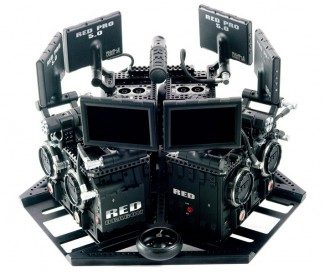
The entire production pipeline will also be a major discussion point during the webinar, because it’s obviously not about trying to take the footage you have and forcing it into a VR environment. Being able to make cinematic VR work for the audience means certain considerations need to be made when you’re shooting. It means you have to think about editing in a different way. It means distribution looks very different, because even though the places viewers can see and access this content are limited right now, that won’t be the case in the future. How are creators supposed to account for such unknowns? These are all things Downing has experience with and will be discussing.
Attendees also can expect him to talk through what’s needed to make “good” VR. That’s going to mean explaining what’s the same and what’s different in terms of the media and tools that most professionals are already familiar with. But if you’re not looking at cinematic content in terms of a frame, does that help or hinder your approach? How much of a traditional ‘film’ mindset can be disregarded when creating this sort of immersive content? And how much of that mindset do non-filmmakers need to adopt or at least consider?
If you look at some recent examples, it’s clear that headway is already being made on what works in this new medium. The creators of these projects are reaching through the ‘fourth wall’. You’re not watching soldiers getting ready for battle, you’re going with them into that battle. You’re not looking on as a huge monster destroys the city, you’re being impacted by debris. The creepy girl isn’t delivering creepy lines to another character, she’s saying them to you. That’s a massive difference from the way in which filmmakers are used to thinking and one that many still need to fully understand.
Filmmakers are by nature creative people, and in some cases the only thing standing in the way of an amazing project is the realization of what can be done now. Regardless of your background though, creatives of all different types will be able to see and hear how this technology will impact the effect they can have on an audience. Whether it’s a filmmaker who needs to realize they’re not in Kansas anymore—or even a developer who has to understand that the reaction of an audience is an important consideration—the possibilities to create truly unique and engaging cinematic content are right in front of us.
As for me, I’m hoping the webinar will help me get past my own limitations about only thinking of VR in terms of Tron, and really explore what opportunities tools like the Oculus Rift open up. At the very least, it should finally upgrade that thinking to Tron: Legacy.
I’ll get there eventually though. What’s the old saying about that journey of a thousand miles? Oh right…it begins with a single headset.
Greg Downing will be participating in a live webinar tomorrow (Thursday, December 11th) that deals with the creation of cinematic VR content. Register here to listen to and join the discussion.

